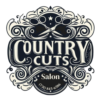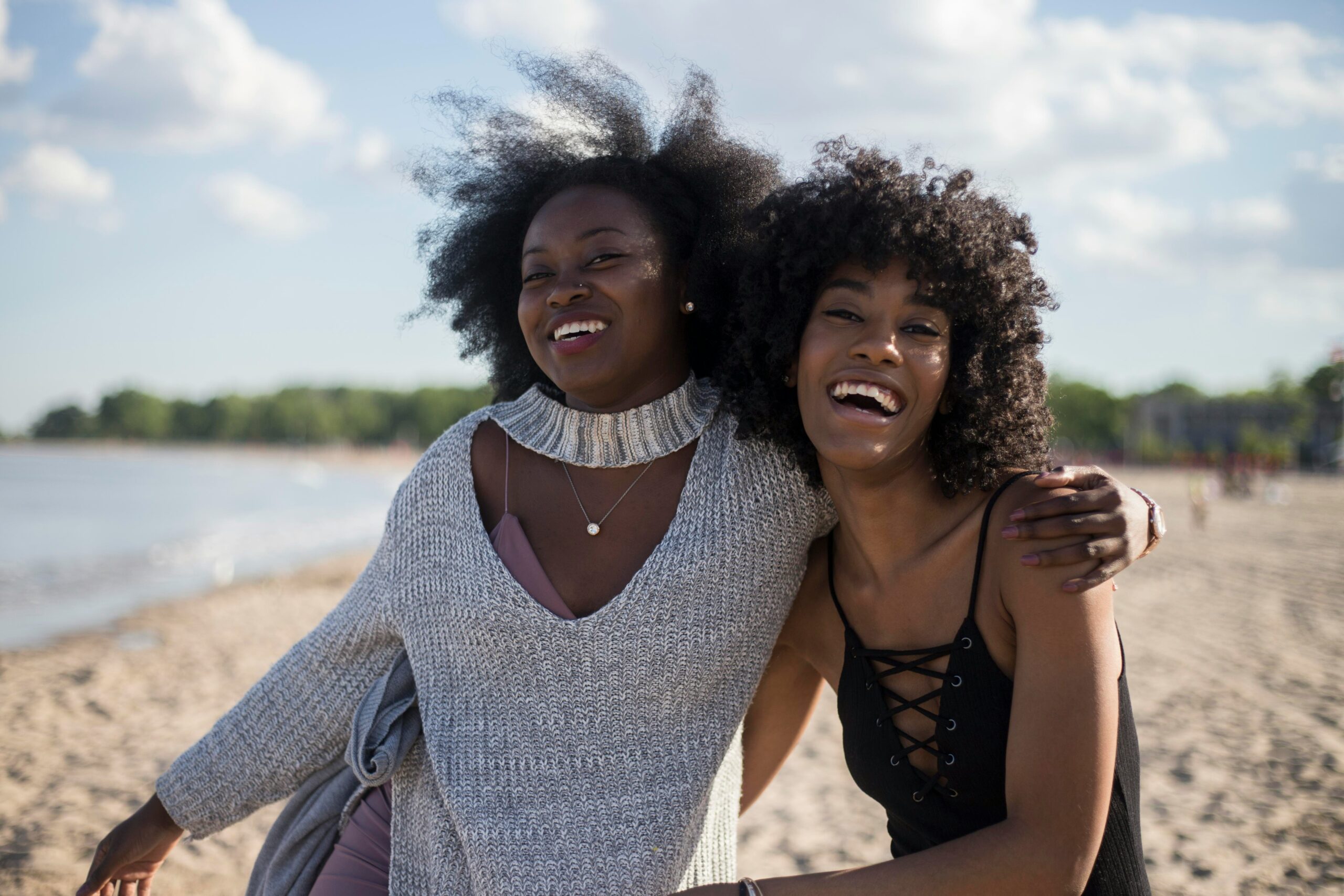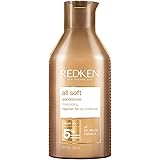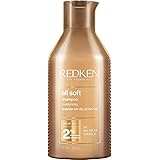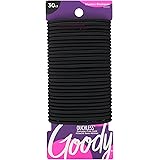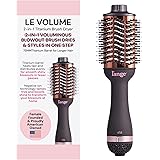Introduction to Hair and Love
The relationship between hair and love is a multifaceted topic that has intrigued many over the years. Hair often serves as a potent symbol of attraction and personal identity, making it a key element in romantic relationships. From early interactions to long-lasting partnerships, hair can convey various emotions and messages, often leading to a deeper understanding of the dynamics between partners.
In romantic contexts, hair can embody beauty and sensuality. It is commonly perceived as a trait that enhances physical appeal, influencing initial attraction. However, hair’s significance extends beyond mere aesthetics. It often plays a critical role in how individuals perceive themselves and their partners. For many, the way one styles their hair can reflect their personality or current emotional state, further impacting the dynamics of a relationship. Thus, understanding the role of hair can provide insights into the complexities of attraction and connection.
Moreover, hair can symbolize cultural or familial identity, forging a bond between partners who share similar backgrounds. This shared understanding rooted in hair can facilitate deeper connections. The act of grooming, touching, or styling a partner’s hair can also serve as an intimate gesture, revealing affection and care between individuals. Such actions often underscore the vital role hair plays in the tactile and visual aspects of romantic love.
As we delve deeper into this topic, it becomes evident that hair is more than just a physical attribute; it is intertwined with emotion, identity, and culture. By exploring the various dimensions of hair within the framework of love, we can appreciate its profound significance in shaping relationships and understanding attraction.
The Psychology of Hair Perception
Hair plays a significant role in social interactions, particularly in romantic relationships. The perception of hair is deeply rooted in psychological and evolutionary contexts, as it is often used as a form of non-verbal communication. Research indicates that individuals are instinctively drawn to various hair attributes, such as color, length, and style, as they can signify health, youth, and genetic fitness. This attraction forms part of an intricate system of social cues that influence interpersonal dynamics.
Studies suggest that hairstyle can greatly impact perceptions of beauty and desirability. For instance, certain hairstyles might convey confidence and attractiveness, while others may not evoke the same reactions. The importance of hair in dating and relationship contexts can often overshadow other aspects of a person’s appearance, underscoring its vital role in the initial stages of attraction. Moreover, individuals tend to categorize people based on their hairstyle preferences, which can inform their decisions regarding romantic involvement.
Furthermore, cultural influences play a key role in shaping our perceptions of hair. Different societies have varying standards of beauty associated with specific hairstyles. For example, in some cultures, long, flowing hair is deemed more attractive, while in others, short, well-groomed styles may be preferred. This cultural variation can cause confusion and conflict in cross-cultural relationships, where partners may have divergent understandings of what constitutes an appealing appearance.
The emotional significance of hair in relationships extends beyond mere attraction; it can also be tied to one’s identity and self-esteem. Individuals often associate their hairstyles with personal expression, and changes in one’s hair can reflect broader psychological states. Overall, the psychology of hair perception highlights its profound impact on relationships, underscoring the complexities involved in human interaction and attraction.
Hair as a Symbol of Identity and Self-Expression
Hair serves as a powerful medium for personal expression and identity, reflecting individual personality traits and cultural backgrounds. The way one chooses to style, color, or cut their hair can convey a wide range of messages about oneself, shaping perceptions in both social and romantic contexts. For many individuals, hair is not merely a physical feature but a form of self-expression that can impact how they are perceived by potential partners.
In romantic relationships, hair can play a significant role in attraction and identity formation. A particular hairstyle may evoke feelings of confidence or vulnerability, leading individuals to present themselves in ways that align with their romantic aspirations. For instance, someone might change their hairstyle to signify a new chapter in their love life, indicating hope or rejuvenation. By altering their hair, they communicate a shift in their emotional state or readiness for change, often seeking to attract a partner who resonates with their evolving identity.
Moreover, the perceptions partners have regarding each other’s hair can lead to deeper emotional connections. Hair types, lengths, and styles are often associated with specific cultural narratives and beliefs, which can influence how partners interact with one another. In some cases, a partner’s hairstyle may become a point of admiration, love, or attraction. Conversely, negative commentary about one’s hair can lead to insecurities or misunderstandings within a relationship, emphasizing the need for open communication about personal choices regarding hair.
Ultimately, hair embodies a complex interplay of identity and self-representation that shapes romantic dynamics. As individuals navigate relationships, the significance of hair as an extension of oneself becomes increasingly clear, underscoring its role in expressing personal identity and influencing relational perceptions.
Cultural Variations: Hair and Love Across Cultures
Hair serves as a profound symbol in various cultures, often playing a critical role in romantic relationships. In many societies, hair is not merely a personal attribute but a reflection of identity and values, which influence how love is expressed and perceived. For instance, in numerous African cultures, the significance of hair goes beyond aesthetics, encompassing community ties and status. Traditional hairstyles may symbolize marital status, age, or tribal affiliation, thereby impacting how romantic partners are selected and perceived.
Similarly, in some Asian cultures, long hair is often associated with feminine beauty and virtue. Women’s hair can be viewed as a source of power, and its styling may be employed to attract potential partners. In contrast, short hair may be perceived as a rebellious statement, often challenging traditional gender roles. The meticulous grooming and presentation of hair in such societies highlight the deep connection between one’s physical appearance and romantic desirability.
In Western cultures, hair may take on different meanings. For many, a partner’s hairstyle can influence attraction, with innovative or well-kept hair often perceived as a marker of self-care and style. Moreover, hair color can also symbolize different traits, such as adventurousness or stability, shaping the dynamics of attraction in romantic contexts. Social media has further transformed these perspectives, as individuals increasingly connect with potential partners based on visual representations of hairstyle trends and grooming practices.
Furthermore, cross-cultural exchanges have enriched the understanding of hair’s role in love, as individuals navigate and blend diverse practices. These interactions signify not only the personal significance of hair in relationships but also the collective cultural narratives that shape love across global societies. Ultimately, the meanings ascribed to hair continue to evolve, reflecting broader societal shifts and individual experiences in the realm of romance.
Hair in Attraction and Dating: First Impressions
Hair plays a pivotal role in the realm of attraction and dating, especially during first encounters. When individuals meet for the first time, their assessments are often based on visual cues, with hair frequently being a focal point. The way one styles their hair or maintains grooming can significantly influence initial impressions. Studies suggest that neat hairstyles are often perceived as indicators of good health and self-care, thus heightening the attraction factor.
In the context of dating, various hairstyles can convey different messages about a person’s personality and lifestyle. For instance, vibrant colors or edgy cuts may project a sense of creativity and boldness, while classical styles may suggest reliability and tradition. These first impressions are not solely based on individual preferences; cultural and social factors also contribute to how hair is perceived in attraction. Hair can symbolize various traits such as confidence and openness, making it a powerful non-verbal communication tool.
The importance of grooming cannot be overlooked, as it underscores the effort made by individuals to present themselves appealingly. Well-kept hair often reflects a person’s attention to detail and self-respect, factors that are typically valued in romantic partnerships. Furthermore, specific hairstyles may attract certain types of partners based on shared interests or values. In social situations, individuals often gravitate towards those whose hair reflects similar aesthetics or lifestyles, facilitating a deeper connection even before a single word is spoken.
Ultimately, while hair alone does not define attraction, it undoubtedly plays a significant role in shaping first impressions during the dating process. The styling choices individuals make can set the stage for relational dynamics, illustrating just how impactful something as simple as hair can be in the realm of human connection.
Falling in Love: The Role of Hair in Romantic Bonds
Hair serves as a significant element in the realm of romantic relationships, often acting as a powerful tool for intimacy and emotional connection. The appreciation and expression of love through hair can manifest in various forms, enhancing the bonds shared between partners. Physical touch, one of the cornerstones of a loving relationship, is frequently paired with hair. For instance, running fingers through a partner’s hair can elicit feelings of warmth and compassion, allowing individuals to communicate affection without words.
The act of touching hair can generate a heightened sense of closeness and security, prompting a deeper emotional bond. Moreover, many individuals take great pride in their hair, viewing it as an important facet of their identity. When a partner compliments or admires their significant other’s hair, it can foster feelings of validation and desirability. This exchange reinforces the emotional ties that unite individuals, showing that one partner values the other’s physical attributes. Such appreciation can lead to heightened self-esteem, further solidifying the romantic connection.
Furthermore, hair often serves as a symbol of attraction and desire. The styling and presentation of one’s hair may significantly influence how individuals perceive one another. Romantic gestures, such as changing one’s hairstyle to surprise a loved one or sharing playful moments involving hair, can contribute to the evolution of intimacy within a relationship. These actions often highlight both partners’ willingness to engage and grow in their emotional journey together.
In various cultures, hair also carries symbolic meanings, representing beauty, strength, and even vulnerability. Understanding these cultural connections can enhance mutual appreciation between partners and allow individuals to explore new dimensions of their relationship. Ultimately, hair plays a multifaceted role in deepening emotional bonds in romantic engagements, fostering intimacy and connection that are essential for loving relationships.
Changing Hairstyles: The Impact on Relationships
Hairstyles play a vital role in shaping personal identity and can have a profound effect on interpersonal relationships. When an individual undergoes a significant change in their hairstyle, it often garners attention and elicits reactions from partners and friends alike. This change can symbolize a variety of meanings, including personal growth, a desire for transformation, or a response to life events. Such alterations may impact the dynamics of a relationship, stirring feelings of admiration or insecurity in a partner.
For many individuals, a dramatic haircut or color change can serve as a bold declaration of self-expression. Partners may react positively, viewing the change as an exploration of autonomy or a manifestation of newfound confidence. This admiration can enhance intimacy and foster a sense of connection, as the partner appreciates the effort put into this transformation. On the other hand, a sudden shift in hairstyle may provoke feelings of unease or jealousy, particularly if the partner perceives this change as a sign of dissatisfaction with the relationship. In such cases, open communication becomes paramount, allowing both partners to express their feelings and seek clarity regarding the motivations behind the hairstyle change.
Moreover, hairstyle changes can encapsulate broader themes of personal evolution. For instance, individuals might feel compelled to alter their appearance following significant life milestones, such as a new job or the end of a long-term relationship. This transformative moment can act as a metaphor for change in one’s life and can prompt partners to reassess their dynamics. Ultimately, the impact of changing hairstyles on relationships is multifaceted, influenced by individual perceptions, societal norms, and the significance attributed to physical appearance in romantic connections.
Hair and Health: Psychological Effects on Relationships
The health of one’s hair can have a profound impact on self-esteem and, consequently, on relationship dynamics. For many individuals, hair is more than just a physical attribute; it is a significant aspect of their identity and personal expression. Healthy, vibrant hair often enhances an individual’s confidence, while hair concerns—such as thinning, damage, or lackluster appearance—may lead to feelings of insecurity. This insecurity can affect interactions within romantic partnerships, sometimes creating a gap in intimacy and communication.
Research has shown that individuals who feel positive about their hair are more likely to engage openly with their partners, fostering a sense of closeness and quality interaction. Conversely, those who struggle with their hair health may withdraw or feel inadequate, potentially leading to misunderstandings and emotional distance in their relationships. Therefore, maintaining hair health is not merely a personal endeavor; it can significantly contribute to a thriving partnership.
Moreover, mutual support in hair care practices can enhance the bond between partners. Engaging in activities such as visiting hair salons together, sharing hair care routines, or even discussing hair-related challenges can strengthen emotional connection. Open communication about individual hair concerns invites empathy and understanding, creating a nurturing environment where both partners feel valued and accepted. As such, supporting one another’s hair health is an opportunity for couples to foster intimacy and trust.
Ultimately, addressing the psychological effects of hair health requires a broad understanding of its significance. While hair may seem superficial at times, its influence on self-esteem and relationship dynamics is anything but trivial. Partners should acknowledge and support each other’s hair journeys, ensuring that both individuals feel confident and connected in their relationship.
Hair Care Rituals and Bonding Activities
Hair care rituals can transform routine grooming activities into meaningful shared experiences that enhance relationships. These rituals not only serve the practical purpose of maintaining hair health but also promote emotional connections among partners, friends, or family members. Engaging in hair care together can foster teamwork and create lasting memories.
One common bonding activity is having styling sessions where individuals assist one another with braiding, curling, or straightening hair. This collaborative approach allows for open communication and attention to detail, as each person learns about the other’s preferences, techniques, and desired looks. Such sessions can become fun and relaxed opportunities to bond while sharing tips and advice about hair products and styling methods, deepening mutual understanding and appreciation.
Additionally, spa days focused on hair care offer another avenue for relationship strengthening. These days can include activities such as deep conditioning treatments, scalp massages, or even haircuts. The intimate nature of these experiences can promote relaxation and trust, allowing individuals to unwind together while simultaneously investing in their hair’s health. It can also serve as a break from everyday stressors, providing a space to enjoy each other’s company in a tranquil environment.
Another popular bonding activity involves engaging in DIY hair masks or treatments with natural ingredients, which can easily turn into a fun and educational experience. Each participant can explore different recipes and bring unique ingredients to the table. As they mix, apply, and discuss the benefits of various treatments, they bolster their relationship while also enhancing their knowledge of hair care. This shared experience encourages creativity and collaboration, reinforcing the bond between those involved.
Ultimately, incorporating hair care rituals into interpersonal relationships not only enhances physical appearance but also enables individuals to forge deeper emotional connections through shared experiences, trust, and mutual care.
Hair and Gender Roles in Relationships
Hair often serves as a crucial component in the complex interplay of gender roles within romantic relationships. Through history, societal norms have established distinct expectations surrounding hair for different genders, which can significantly influence how individuals perceive themselves and each other. For instance, traditional portrayals often depict femininity as being associated with long, flowing hair, whereas masculinity is frequently linked to shorter styles. These associations create a framework within which individuals may feel pressure to conform, impacting their self-image and the dynamics of their relationships.
The significance of hair extends beyond mere aesthetics; it plays a role in identity expression and cultural affiliations. In many cultures, hair can indicate adherence to specific gender norms, thereby affecting interpersonal dynamics. For example, a woman with a shaved head may challenge traditional views of femininity, leading to various responses from partners that can range from admiration to discomfort. Similarly, men embracing longer hairstyles may face societal stigma, affecting their relationships where conventional gender roles are deeply ingrained.
Moreover, the treatment of hair within relationships can also mirror broader societal discussions around equality and empowerment. Partners may negotiate their preferences and values regarding hair, reflecting deeper conversations about autonomy and self-expression within the relationship. By recognizing the symbolic nature of hair, couples can address underlying tensions related to gender roles and foster a more inclusive environment that values individuality over conformity.
Overall, the relationship between hair and gender roles underscores the importance of dialogue within romantic partnerships. Understanding the influence of societal expectations can empower both partners to navigate their differences and foster a more equitable relationship that acknowledges the role of hair as an extension of personal identity.
The Emotional Impact of Hair in Breakups
Hair often serves as a powerful symbol of personal identity, and its transformation during times of emotional distress, such as breakups, can be particularly significant. When a relationship ends, individuals may turn to drastic changes in their hair as a coping mechanism or a way to express their newfound independence. This act can manifest in various forms, including a dramatic haircut, a change in color, or a shift in hairstyle altogether. Each of these alterations can signify a conscious decision to move on and redefine oneself in the wake of a loss.
The link between hair and self-image becomes particularly pronounced during the dissolution of romantic relationships. Many people associate their partner’s affection with specific aspects of their appearance, including their hairstyle. When a relationship ends, the hair can embody the emotional weight of those memories and experiences. As such, the desire to change one’s hair may not only represent an attempt to grapple with heartbreak but also signify a deeper need to reconstruct personal identity outside the confines of the former partnership.
Moreover, the rituals associated with hair care—like cutting, dyeing, or styling—can provide a tangible outlet for emotional expression. Individuals may find solace in these activities, allowing themselves to process feelings of sadness or loss. The act of reshaping one’s hair not only serves as a visible transformation but also symbolizes the internal journey of healing and self-discovery. Consequently, the phase following a breakup often sees people using hair as an instrument to navigate their emotional landscape. Thus, the significance of hair during this period extends beyond appearance, playing a crucial role in the complex interplay of feelings tied to relationship loss.
Hair in Media and Its Influence on Love
The portrayal of hair in films, literature, and other forms of media plays a significant role in shaping societal perceptions of love and beauty in relationships. Hair often serves as a powerful symbol, representing not only physical attractiveness but also individual identity and emotional connection. Through the ages, numerous characters and narratives have underscored the significance of hair, intertwining it with themes of romance, desire, and emotional depth.
In cinema, iconic scenes frequently highlight hair as a central feature of a character’s allure or charm. For instance, romantic films may emphasize the act of one character tenderly playing with another’s hair, symbolizing intimacy and affection. Similarly, hair is often styled in ways that reflect a character’s emotional state, suggesting that it can deepen the audience’s understanding of romantic connections. Such representations encourage viewers to associate specific hairstyles or colors with notions of love, desire, and attractiveness, influencing personal styles and grooming choices in real life.
Literature also plays a pivotal role in this discourse. Descriptions of a character’s hair often invoke imagery that connects it with virtues like beauty, mystery, or rebellion. Authors utilize hair—as a motif for longing, seduction, or even tragedy—shaping readers’ perceptions of love based on the physical attributes of the characters they admire. In narratives where love is pivotal, the styling and condition of hair can serve as metaphors for underlying emotional currents, thereby influencing how readers interpret relationships.
Moreover, the proliferation of social media has transformed the conversation around hair and relationships. Platforms that emphasize personal expression often promote ideals of beauty that stem from well-coiffed hairstyles. The merging of these media portrayals and personal experiences affects how individuals engage with their own identities and their perceptions of potential romantic partners. As such, hair remains a potent force in the complex interplay of love, beauty, and self-expression within societal narratives.
Myths and Misconceptions About Hair and Relationships
Hair has long been associated with beauty, femininity, and desirability in many cultures, leading to several myths regarding its role in relationships. One prevalent belief is that long hair is inherently more attractive than short hair. While traditionally, long locks may have been celebrated in media and fashion, contemporary perspectives increasingly embrace a variety of styles. For instance, numerous studies indicate that personality traits, confidence, and compatibility often hold more weight in attraction than hair length alone. Short hairstyles can exude freshness and modernity, reflecting a person’s style and attitude, which can be equally appealing.
Another common misconception equates specific hairstyles with particular personality traits. For example, some assume that a person with wild, curly hair is untamed and spontaneous, whereas straight, neatly styled hair suggests organization and reliability. Such stereotypes are overly simplistic and ignore the complexity of individual personalities. The truth is that hair can be an expression of personal identity, but it does not determine a person’s character or relational potential.
Moreover, many people believe that the upkeep and maintenance of hair reflects an individual’s ability to care for themselves or others in a relationship. However, the reality of hair care is that it is often influenced by socioeconomic factors, personal preferences, and available time. Thus, one’s hair may not accurately reflect love or commitment levels in a partnership. Ultimately, attraction and connection are multifaceted, extending far beyond hair types or styles. Recognizing these myths can help individuals approach relationships with a more nuanced understanding of what truly fosters attraction and connection between partners.
Expressing Love through Hair: Hairstyles and Significance
Hairstyles have long been seen as a form of self-expression, but their significance extends into the realm of romantic relationships, where certain styles carry profound emotional weight. Various hairstyles can symbolize love and commitment, serving as subtle yet powerful expressions of one’s feelings towards a partner. From the intricacies of braiding to the simplicity of a loose ponytail, each hairstyle can evoke particular sentiments and memories that deepen relational bonds.
One widely recognized hairstyle linked to love is the romantic braid. Whether it’s a loose fishtail or an elegant waterfall braid, these styles can encapsulate the idea of interconnection and intimacy. The act of braiding hair is often associated with care and commitment, not only because it requires time and precision but also because it often involves a partner’s participation. This shared experience can strengthen the emotional ties between partners, signifying mutual trust and affection.
Another hairstyle that holds romantic implications is the classic updo. Frequently seen in wedding ceremonies, updos symbolize elegance and transformation—central themes in love and partnership. By adorning one’s hair in intricate arrangements, the individual showcases their dedication to the event and the relationship itself. This display of effort often mirrors the nurturing nature of love, where partners invest time and resources in each other.
Additionally, hairstyles can reflect personal milestones within a relationship. For instance, shifting from a carefree haircut to a more mature, defined style may signify personal growth, influenced by the partnership’s evolution. In this way, hair becomes a narrative thread, weaving a story of love, identity, and commitment.
Ultimately, hairstyles serve not only as aesthetics but as symbols of emotional connection, making them a significant aspect of romantic relationships.
Demonstrating Affection: Hair as a Love Language
In relationships, physical touch serves as a profound means of expressing affection, and hair plays a significant role in this intimacy. Engaging in activities like playing with a partner’s hair or sharing hair care rituals can strengthen emotional bonds and enhance feelings of closeness. For many, the act of stroking, braiding, or curling someone’s hair can trigger a sense of comfort and security, thereby deepening the connection between partners.
Hair, often referred to as a person’s crown, carries emotional significance. When one partner gently runs their fingers through the other’s hair, it symbolizes trust and vulnerability. This simple act can convey care and support, fostering an atmosphere of love and understanding. Furthermore, these gestures can stimulate chemical responses in the brain, releasing oxytocin, the so-called “love hormone,” which promotes feelings of attachment. Thus, indulging in such intimate maneuvers could certainly be seen as a unique love language.
Moreover, creating shared rituals around hair care can also solidify a couple’s bond. Whether it’s a Saturday night devoted to pampering each other or a combined hair coloring session, these moments become cherished experiences that help couples navigate their relationship. Rituals emphasize commitment and active participation in each other’s lives, demonstrating that one values the partner’s personal care and well-being.
Additionally, cultural contexts often influence how hair is perceived and treated within relationships. In many cultures, hair symbolizes beauty and identity, further enhancing its role in expressions of love. Engaging in hair-related activities can thus serve as a cultural bridge, deepening shared understanding and appreciation. Therefore, hair can undeniably be regarded as a powerful medium through which affection is demonstrated, embodying both touch and intimacy that are vital to nurturing lasting relationships.
Hair and Aging: Navigating Changes Together
Aging is an inevitable process that affects many aspects of an individual’s life, including the texture, color, and overall health of hair. For both men and women, changes in hair due to aging can lead to feelings of insecurity and loss of self-esteem. As partners navigate this journey together, understanding and support are essential. Couples can foster a deeper bond by embracing these changes as part of their shared experience.
Gray hair, for instance, is a common occurrence as people age. It can serve as a symbol of wisdom and maturity, yet it may also come with feelings of anxiety for some individuals. This is where open communication between partners is crucial. Discussing feelings about graying hair can lead to increased intimacy and the strengthening of emotional connections. Encouraging each other to embrace natural hair changes can cultivate a sense of pride in aging gracefully together.
Moreover, hair thinning or loss can be another significant concern for individuals as they age. This physical change can impact self-image and trigger insecurities. Partners can play a vital role in this aspect by providing reassurance and appreciation for one another’s enduring qualities. By focusing on the emotional support that partners offer, couples can create a nurturing environment that encourages both individuals to navigate these transitions with grace and understanding.
In addition to emotional support, practical measures can be taken to adapt to changes in hair. Exploring new hairstyles, hair care products, and even discussing options for hair restoration can serve as bonding activities for couples. Such initiatives not only address the challenges posed by aging hair but also reinforce a shared commitment to maintaining each other’s well-being. As partners face these changes together, they can discover that love deepens in the journey of growing old, and that hair, while significant, is but one facet of the enduring relationship they share.
Hair-Related Conflicts in Relationships
Hair can often serve as a reflection of individual identity, which makes it a significant factor in interpersonal relationships. Conflicts may arise when partners hold differing views on grooming preferences, hairstyle choices, or attitudes towards hair maintenance. For example, one partner may prioritize personal appearance and grooming, while the other may adopt a more relaxed or carefree attitude towards hair. Such contrasts can lead to misunderstandings or feelings of neglect, which could potentially strain the relationship.
Additionally, cultural backgrounds can influence hair-related conflicts. In certain cultures or families, specific hairstyles may signify respect or adherence to tradition. This can create tension when partners come from diverse backgrounds, bringing unique attitudes or grooming rituals to the relationship. For instance, one partner might view hair as an essential component of self-expression, while the other could see it primarily as a practical aspect of daily hygiene and care. This divergence in perspective can spark discussions that may inadvertently escalate into disputes.
To navigate these hair-related challenges, open communication is essential. Couples should feel comfortable discussing their grooming preferences and the significance behind their choices. Practicing active listening can foster a respectful dialogue, where each partner expresses their sentiments without feeling judged. Moreover, compromise can be a valuable tool in resolving conflicts. For instance, partners can agree on certain styles or grooming habits that respect both individuals’ preferences, creating a harmonious balance.
Another effective strategy is to engage in collaborative hair-related activities, such as trying new hairstyles together or attending grooming sessions. This can promote bonding and understanding, as it allows each partner to appreciate the other’s perspective. By addressing hair-related conflicts through understanding and cooperation, relationships can grow stronger, ensuring that hair serves as a unifying element rather than a source of discord.
Conclusion: The Enduring Connection between Hair and Love
Throughout human history, hair has held a multifaceted cultural and emotional significance that extends into personal relationships. This exploration into the role of hair in love and relationships reveals that it is more than a mere physical attribute. Rather, the ways in which individuals style, maintain, and perceive their hair can profoundly influence their interactions with partners, friends, and families. Hair carries symbolism that can reflect individuality, tradition, and even personal experiences, bridging the connections between love and identity.
The discussion highlights how hair can serve as a medium for expressing affection, such as when one partner styles the other’s hair, indicating trust and intimacy. Additionally, it showcases the social dynamics at play, where societal standards and personal preferences intertwine to shape perceptions of beauty and desirability in relationships. The care individuals take in grooming their hair often conveys messages about how much they value their connection with others, thus reinforcing the intricate bond between personal presentation and emotional closeness.
Furthermore, the act of sharing hair-related experiences—whether through hair care routines, styling tips, or personal anecdotes—creates opportunities for partners to connect on deeper levels. This shared experience can strengthen relational ties, fostering an environment of support and understanding. In turn, the exchange around hair becomes a means of reinforcing love and affection.
In conclusion, the enduring connection between hair and love is multifaceted and deeply ingrained in the fabric of human relationships. The significance of hair transcends physical appearance; it encapsulates emotional ties, social dynamics, and personal identities. Embracing the multifarious ways hair interacts with love can lead to a deeper understanding of our connections with others, underscoring the idea that this seemingly simple aspect of ourselves may play a pivotal role in the relationships we cultivate and cherish.
Further Reading and Resources
For those interested in exploring the intricate relationship between hair and personal relationships, several valuable resources are available. Academic studies, articles, and books delve into the sociocultural significance of hair as well as its psychological implications in romantic partnerships. These materials can provide a broader understanding of how hairstyles and grooming practices may influence perceptions of desirability, identity, and emotional connections.
One essential study is “The Psychology of Hair: The Impact of Hair on Relationships” published in the Journal of Personality and Social Psychology. This research outlines how an individual’s hairstyle can significantly influence attraction and interpersonal dynamics. Another insightful article, “Hair Care and Relationship Commitment,” from the Journal of Applied Social Psychology, examines how grooming behaviors contribute to emotional bonding between partners.
Books like “Hair: A Human History” by Victoria Sherrow present an engaging overview of the cultural and historical roles that hair has played within human communities. This book discusses numerous relationships where hair serves as a pivotal element in identity formation and expression. Additionally, “For the Love of Hair: The Impact of Hair on Personal Relationships” provides anecdotal and research-based insights on how hairstyle choices affect dating and partnership experiences.
Online platforms such as Psychology Today and The HuffPost feature articles that examine how societal norms surrounding hair affect self-esteem and relational interactions. Furthermore, podcasts such as “Hair Stories” delve into how individual hair journeys intersect with love and relationships in contemporary culture.
In conclusion, readers eager to expand their knowledge on the connection between hair and relationships will find a wealth of information across various mediums. Engaging with these resources will offer deeper insights and foster a more profound understanding of this fascinating topic.
Call to Action: Share Your Hair Stories
In exploring the intricate relationship between hair and love, we recognize that these connections often deeply resonate on a personal level. Each individual’s experience with hair—whether it be the joy of a new hairstyle, the significance of maintaining a cherished family tradition, or the emotional journey of change—can evoke powerful stories. We invite you, our readers, to share your unique narratives that illuminate the multifaceted role hair plays in your romantic relationships, friendships, and family dynamics.
Perhaps you have a memorable story of how your partner’s hair inspired deep affection or sparked your interest. Maybe your family has cultural rituals related to hair that have created lasting bonds. These experiences not only enrich our understanding of hair’s significance but also build a supportive community. By sharing your stories, you contribute to a collective tapestry of love, identity, and connection that we hope encourages dialogue among our readership.
Moreover, reflecting on your hair-related experiences could foster greater self-awareness and appreciation within personal relationships. Hair, as a powerful form of expression, can shape perceptions of beauty and self-image in both positive and challenging ways. By articulating and exchanging these narratives, we provide space for growth, empathy, and understanding regarding how hair impacts our lives and those around us.
We encourage you to leave your contributions in the comments section below. Your insights can inspire others and may well resonate with someone who has faced similar situations. Let’s create a platform where we can collectively explore how hair intertwines with emotions, relationships, and love. Your story could be the catalyst for someone else to reflect on their journey. Together, we can celebrate the significance of hair in our love stories.
